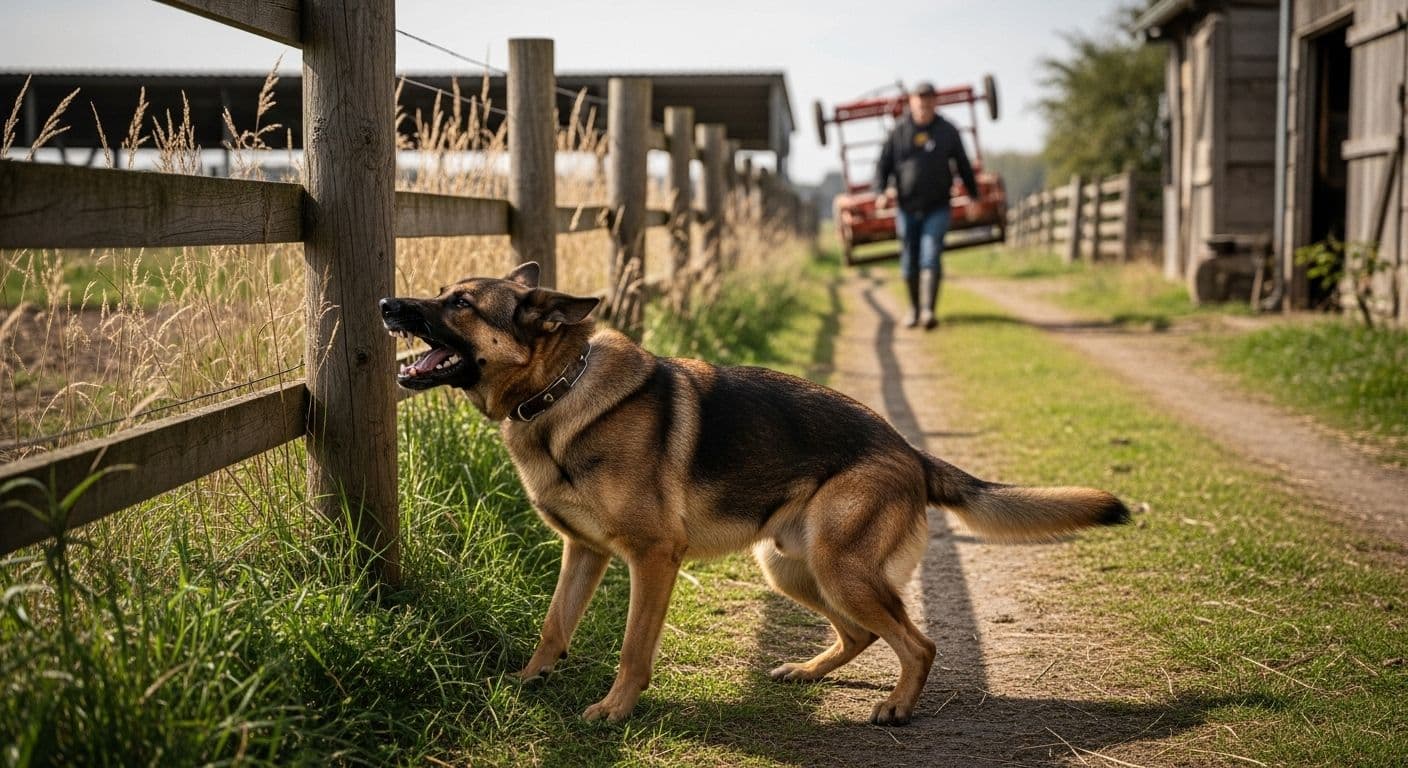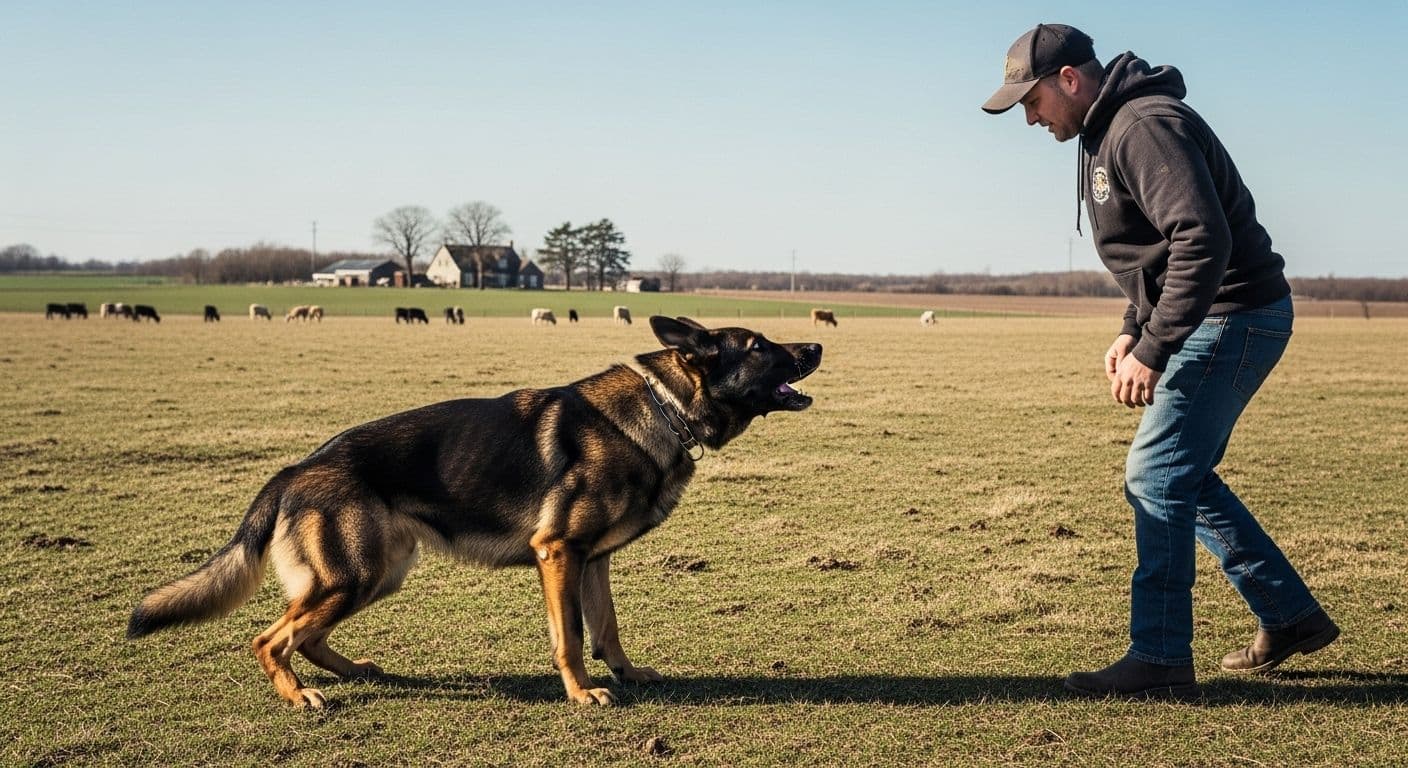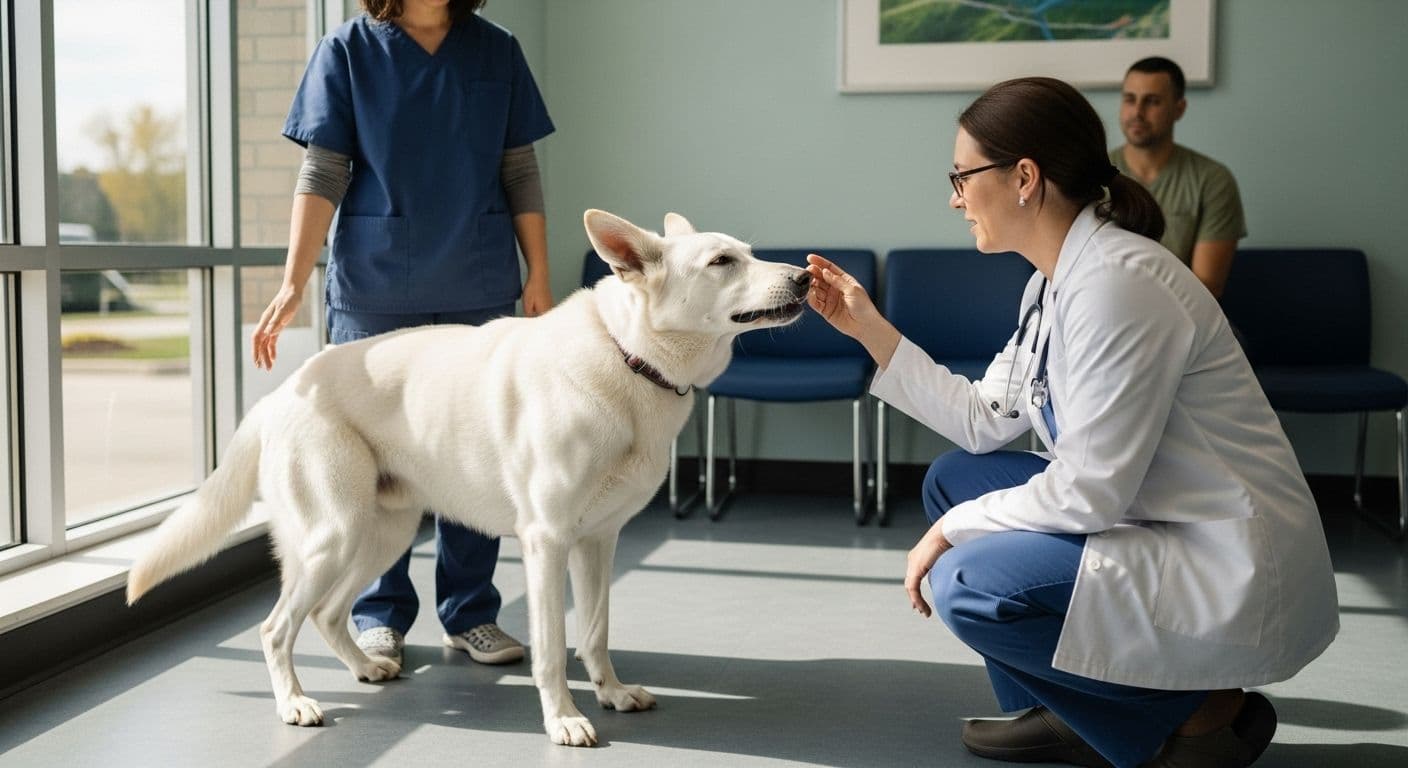Most dog bites don’t come from “bad” pups, they come from dogs who are flat-out terrified and feel cornered. When a frightened dog thinks there’s no way to flee, the next best option is to drive the scary thing away. That hair-raising, teeth-baring moment is called fear aggression in dogs, and it’s one of the biggest reasons families call trainers or veterinarians.
In this friendly how-to, we’ll unpack what fear-based aggression looks like, why it happens, and, most importantly, exactly what you can do right now to keep everyone safe and start teaching calmer habits.
A scared dog isn’t trying to be naughty.
He’s simply fighting for what he believes is his life.
What Fear Aggression Looks Like

A growl or snap rarely pops out of thin air. Early warning signs are quick, subtle, and easy to miss if you don’t know what to watch for. Keep your eyes peeled for these clues:
- Body position: head low, weight rocked back, tail tucked or rigid
- Whale eye: you see the whites of the eyes as your dog tracks the threat
- Lip-licking and yawning: rapid tongue flicks or big, exaggerated yawns
- Ears pinned, mouth tight: the whole face looks strained, not soft
- Freeze, then explosion: a split-second stiffening before a bark, snarl, or bite
Spotting these signals early lets you step in with smart choices instead of scrambling after an outburst.
Why Dogs Develop Fear Aggression

Fearful hostility is a cocktail of life experience and biology. Several ingredients push a nervous dog toward defensive violence:
- Genetics and in-born temperament
- Missing out on positive socialization during the critical puppy window
- Punishment or painful episodes that teach “people hurt”
- Chronic stress, crowded homes, unpredictable kids, or territorial aggression in dogs next door
- Medical issues that make touch, sound, or movement hurt or startle
Dog fear aggression usually shows up between nine months and three years the canine version of teen angst, when hormones, confidence, and social pressure collide.
First-Aid: Keeping Everyone Safe
Before diving into dog training for aggression, set up simple safety nets so nobody gets hurt and your dog stops “practicing” scary behavior.
- Add space: baby gates, x-pens, or closed doors separate your pup from visitors, delivery drivers, or rowdy kids
- Upgrade gear: a snug head halter or front-clip harness gives steering power without pain; pair it with a strong leash and backup clip
- Teach a happy muzzle: sprinkle treats in a basket muzzle until your dog shoves his nose in willingly, no teeth on skin while you practice reactive dog training
- Control the scene: schedule early-morning walks, close street-facing blinds, and play white noise to mute surprise sounds
- Track the triggers: jot down time, place, and intensity every time your dog stiffens, growls, or barks, patterns steer your plan
Management isn’t “giving up.” It buys you breathing room to focus on real dog training for aggressive dogs instead of shouting “No!” after the fact.
Training Plan for Fear Aggression in Dogs
Modern, evidence-based behavior change rests on two pillars: teach what you DO want, and change how the dog FEELS about scary stuff.
Step 1. Build a Calm Foundation
- Mat chill-outs: cue “bed” on a portable mat; reward relaxed down-stays with soft praise and slow breathing
- Nose-to-hand targets: have your dog bop your palm for treats; later you’ll redirect him toward you instead of strangers
- Pattern games: two-step treat tosses, figure-eights, or “find it” sniff-noses create predictable, fun choices in new places
Step 2. Desensitization & Counter-Conditioning
- Start under threshold: a quiet person 50 feet away, a kid soundtrack on low, whatever’s barely noticeable to your dog
- Pair it with jackpot snacks: scary sight? Rain chicken! Scary sound off? Chicken stops. Your pup starts rooting for the trigger to appear.
- Level up slowly: shrink distance, raise volume, or lengthen time only while your dog stays loose, waggy, and curious
This is the beating heart of aggressive dog training. Do it right and the “monster” predicts cheese, not pain.
Step 3. Install Emergency U-Turns
Teach a peppy “Let’s go!” followed by a quick pivot and trot away. Drill 20–30 reps in the hallway, then the yard, then calm streets. An instant escape valve prevents on-leash meltdowns while you keep training reactive dog patterns.
Step 4. Generalize to Real Life
Practice everywhere: parks at off-hours, quiet parking lots, friend’s driveways. Invite calm pals, borrow neutral dogs, shake up scenery. The wider you proof, the faster you master how to train a reactive dog.
Measure success in soft eyes, loose shoulders, and a wagging tail
not in how close you force your dog to the trigger.
Fearful rescue dog with a bite history desperately needs training! How to train a fearful dog?
When Training Isn’t Enough: Medication & Professional Help

Behavior meds aren’t “doggie downers.” They lower the panic volume so your pup can learn.
- SSRIs (fluoxetine, sertraline): dial down chronic anxiety powering fear aggression
- Tricyclics (clomipramine): help some dogs who guard space or people
- Fast-acting aids (trazodone, benzodiazepines): take the edge off fireworks, vet visits, or reactive dog training class
Only a veterinarian can prescribe medication for aggressive dogs, rule out pain, and coordinate with a certified behavior pro. Reach out fast if:
- Bites have punctured skin
- Triggers feel random or unpredictable
- Kids or frail adults live in the home
- Multiple issues, resource guarding, lingering puppy aggression, or territorial aggression in dogs—overlap
Living Well: Long-Term Management & Prevention
Fear aggression can fade to the occasional mild grumble, but a dog with a bite record deserves respectful handling for life.
- Stick to routines: regular walks, meals, and quiet breaks keep stress low
- Refresh skills weekly: five-minute tune-ups of hand targets, mat work, and U-turns prevent backsliding
- Advocate in public: “Give Me Space” vests or yellow ribbons politely warn strangers to hang back while you’re training a reactive dog
- Plan for guests: stash the dog behind a gate with a stuffed Kong before opening the door; release only when everyone’s settled
- Socialize early: gentle, positive outings during the 3–16-week window are the best vaccine against future fear aggression in dogs
Consistency turns management from hassle to habit. Over months, your dog rehearses calm choices thousands of times and quietly forgets the old panic dance.
Conclusion
Fear aggression in dogs isn’t a moral failing, and it’s rarely hopeless. It’s a predictable chain of triggers, emotions, and defensive actions you can untangle with knowledge, patience, and the right blend of management, training, and medical support. By reading body language, preventing bad rehearsals, applying modern dog training for aggression, and teaming up with pros, you can help your dog feel safe enough to choose cooperation over conflict.
The payoff? Peaceful walks, relaxed houseguests, and a dog who finally believes the world, and you, have his back.



